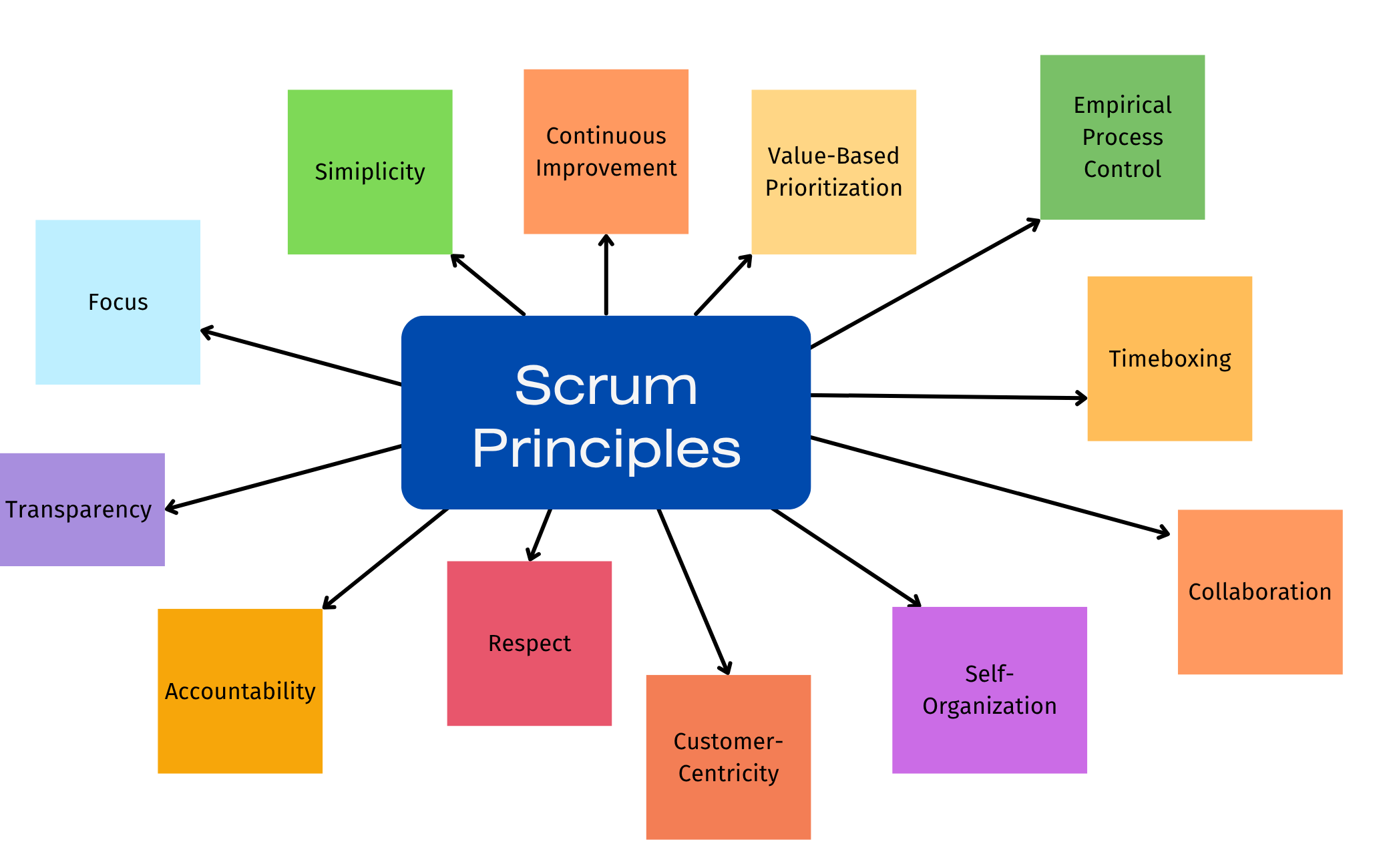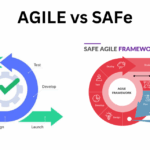Home / Our Blog / The 12 Principles of the Scrum Framework
The 12 Principles of the Scrum Framework
Jul 22, 2025 Agile Frameworks
Scrum is a popular Agile framework that is used by organizations to improve team collaboration, boost productivity, and ensure timely delivery of high-quality products. The framework is centered around the idea of continuous improvement, transparency, and flexibility. While many people are familiar with the roles, ceremonies, and artifacts within Scrum, the principles behind Scrum are often overlooked. These principles guide teams in delivering maximum value to customers while embracing changes and challenges.
Here’s a look at the 12 principles of the Scrum framework:
1. Empirical Process Control
At the heart of Scrum is empiricism – the idea that knowledge comes from experience and making decisions based on what is known. Scrum promotes an iterative process where teams inspect and adapt their progress regularly. The framework operates on three pillars:
- Transparency: All aspects of the project must be visible to the stakeholders to ensure that everyone is aligned and informed.
- Inspection: Regular checks are conducted to review progress, challenges, and outcomes.
- Adaptation: Teams make adjustments based on what is discovered during the inspection process.
2. Self-Organization
Scrum relies on self-organizing teams where team members collaborate and manage themselves without external direction. This encourages empowerment, creativity, and accountability. In a self-organizing team, roles and responsibilities are shared, and everyone is encouraged to make decisions that lead to the success of the project.
3. Collaboration
The principle of collaboration emphasizes the importance of working together as a unified team, often across different departments or with external stakeholders. Effective communication and teamwork are critical for achieving the Scrum goals, as Scrum encourages constant interaction with customers, stakeholders, and team members to ensure alignment.
4. Value-Based Prioritization
In Scrum, the focus is always on delivering the most valuable product features first. Teams work closely with the Product Owner to ensure that the highest value items are prioritized and developed first, giving the stakeholders the most value early in the project lifecycle. This helps to maximize the return on investment (ROI).
5. Timeboxing
Scrum promotes timeboxing – setting fixed durations for activities like Sprint Planning, Sprint Review, and Sprint Retrospective. This encourages focus and efficiency. It ensures that team members can work on tasks within a defined time frame, making it easier to manage progress and avoid excessive delays.
6. Continuous Improvement
Scrum teams are expected to continuously improve their processes and outcomes. After each Sprint, teams hold a Sprint Retrospective meeting where they reflect on what went well, what didn’t, and how they can improve. This iterative approach promotes a culture of ongoing learning and adaptation.
7. Simplicity
In Scrum, simplicity is key. The team focuses on delivering the simplest solution that satisfies the requirements, removing unnecessary complexity. This not only saves time and resources but also makes the product easier to maintain and evolve over time.
8. Focus
Scrum emphasizes focus on the current goals and objectives. During a Sprint, the team commits to a set of Product Backlog items and works towards completing them without distractions. The concept of focus is also evident in the role of the Scrum Master, who removes any impediments that might disrupt the team’s focus.
9. Transparency
Transparency is a cornerstone of Scrum. The progress of the project, along with the state of the work and any challenges, must be visible to everyone involved. This principle ensures that there are no hidden issues or misunderstandings, and everyone can make decisions based on accurate, up-to-date information.
10. Accountability
In Scrum, accountability is shared across the team. Everyone is responsible for their work and for the success of the team. The Product Owner is accountable for managing the Product Backlog, the Scrum Master is responsible for removing obstacles, and the Development Team is accountable for delivering the product increment.
11. Respect
Respect is fundamental to successful Scrum teams. Team members are expected to respect each other’s skills, ideas, and time. A respectful environment fosters trust, collaboration, and healthy conflict resolution, all of which contribute to a more effective team.
12. Customer-Centricity
Scrum always keeps the customer in mind. The ultimate goal is to deliver a product that satisfies the customer’s needs and solves their problems. The Product Owner is responsible for ensuring that the product backlog is aligned with customer needs, and that the team is focused on delivering the highest value to the customer.
Conclusion
The 12 principles of Scrum serve as the foundation of the framework, helping teams work together effectively, adapt to change, and deliver high-quality products. By embracing these principles, organizations can foster a culture of continuous improvement, focus on delivering value, and respond to customer needs quickly and efficiently. Scrum’s iterative and transparent approach, combined with self-organizing teams and constant collaboration, makes it one of the most widely adopted frameworks for Agile software development and project management today.









